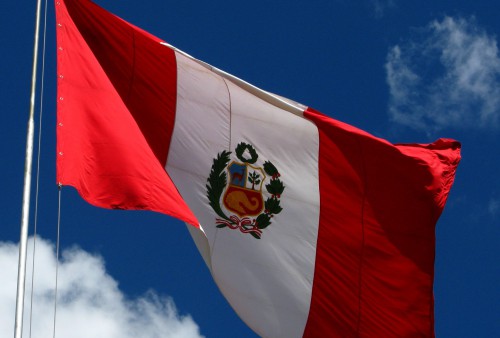Glencore in Talks over South American Copper Mines

Exclusive: Glencore in Talks over South American Copper Mines
Glencore is in talks with Silver Wheaton and Franco-Nevada over gold and silver streaming deals on three of its copper mines in South America, according to high level sources directly involved in the process.
Negotiations are currently focused on Glencore’s Antamina and Antapaccay copper mines in Peru and its Collahuasi copper mine in Chile. They are all “proven operations”, one source involved told Master Investor, with long mine-lives and substantial precious metal by-product, making them ideal for streaming contracts, equivalent to a bulk forward sale.
The contracts could raise more than $1.4bn for Glencore, based on pricing in recent deals, if it closes agreements over 50 to 75 per cent of its attributable gold and silver from each of the three mines. Antapaccay is wholly-owned by Glencore, whilst Antamina is shared with BHP Billiton, Teck and Japan’s Mitsubishi.
Collahuasi, which has a 68-year mine-life, is co-owned by Anglo American. It is unclear whether Anglo American and Teck, which are both locked in capital raising efforts of their own, have also taken a seat at the table.
“Non-Core”
News of the discussions follows surprise measures announced by Glencore last week, including the cancellation of its dividend, a $2.5bn equity raise and an 18-month shutdown of its copper mines in Zambia and the Congo.
The group is also targeting up to $2bn in asset sales, including streaming deals and a potential sale of a minority stake in its agricultural logistics business. Glencore’s finance director Steven Kalmin told a conference call last week that the group is “in a process” over streaming, predicting an agreement “before the end of the year.”
Glencore is one of the world’s five largest silver miners, generated as by-product from its base metals mines, and produced 411,000 ounces of gold in the first 6-months of this year, nearly double the output of Canada’s largest gold mine.
A Glencore source says its gold and silver by-product is “non-core”, because it cannot be pumped through the group’s $178bn trading division, which is focused on larger markets, including copper, zinc, coal, oil and wheat. A $5bn spin-off of its Kazakh gold assets, part of its Kazzinc portfolio of zinc mines, was pulled in 2010, shortly before Glencore’s listing in London, Switzerland and Hong Kong, due to market conditions.
The Kazakh mines account for nearly two-thirds of Glencore’s gold production, but are not part of current discussions. Its attributable production from Antamina, Collahuasi and Antapaccay is 82,000 ounces of gold and 7.7m ounces of silver each year, equal to annual cash flow of over $200m, even at current prices.
Silver Wheaton
Streaming was coined by Vancouver-based Silver Wheaton in 2004, paying C$262m for all future silver from the Luismin gold mine in Mexico. It has since bought streams over 21 different mines in deals totalling $5.7bn, but has long coveted the vast gold and silver by-product thrown-off by the world’s largest diversified miners.
Silver Wheaton “cracked” the dormant market in 2013, analysts at TD Securities wrote at the time, after the company landed a $1.9bn gold deal with Brazil’s Vale, the largest streaming deal concluded to date. The breakthrough was dealt a setback however when credit-rating agency S&P reclassified streaming agreements, ranking them as debt, on the basis that they are done “in lieu of borrowing” and are sometimes repayable in cash.
The policy has since been softened, but will be a critical consideration for Glencore, which is trying to lower its leverage in the eyes of rating agencies, to uphold the profitability of its debt-heavy trading business.
Agreeing the classification of streams with S&P is “a negotiation and balance”, one source said, with several workable options on the table. Streams over Glencore’s mines, for example, could be secured against the group’s underlying holding companies, meaning they would not register as borrowing for the parent company, Glencore International AG.
One-Way Growth
It is unclear whether Denver-based Royal Gold, the third largest streaming player by market cap, is also involved in the process. The company is sitting on around $1.4bn in cash and undrawn credit and typically structures its streaming deals through the Swiss canton of Zug, where Glencore is also based.
Franco-Nevada is sitting on $611m in cash and $750m in undrawn credit, whilst Silver Wheaton has $72m in cash, $715m in debt and $1.3bn in undrawn credit.
Analysts have questioned whether Glencore can meet its target of $2bn in asset sales, given current market conditions, but its sudden move towards streaming highlights how many levers the group can pull. It also highlights the one-way growth of the royalty and streaming sector, which catches new assets when markets fall, only adding to its cash flow and firepower when prices recover.
Glencore already has a 20-year streaming deal with Silver Wheaton over the Yauliyacu mine, Peru, struck in 2006 for $285m, but Rio Tinto and BHP Billiton, which mined a combined 670,000 ounces of gold last year, are yet to fall into the net.
Co-published by Global Mining Observer
Comments (0)